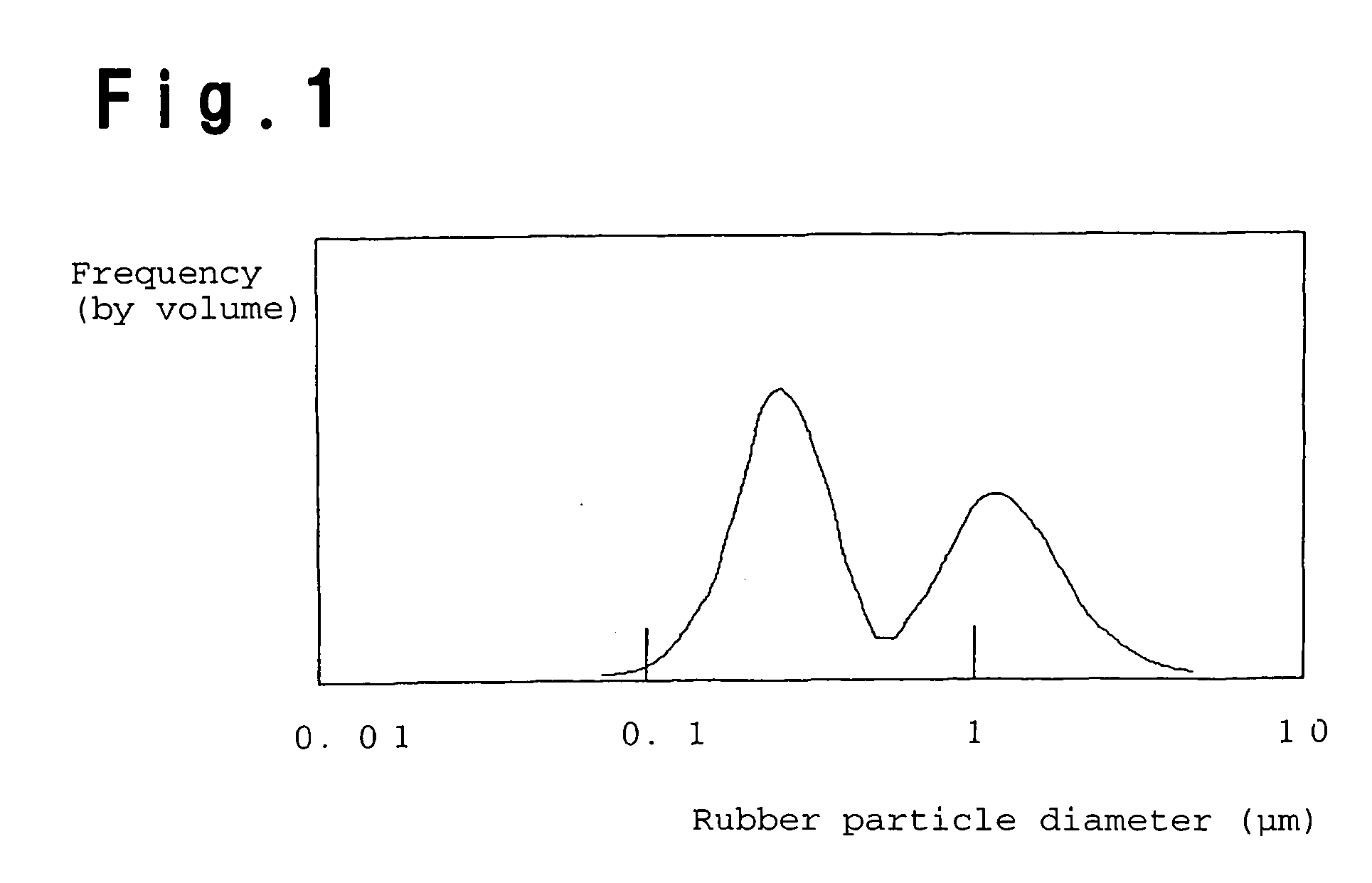Transparent rubber-modified copolymer resin and resin composition containing the same
a technology of transparent rubber and copolymer resin, which is applied in the field of transparent rubber-modified copolymer resin and resin composition containing the same, can solve the problems of insufficient transparency, impact resistance and rigidity, and insufficient against a demand, and achieves excellent transparency, impact resistance and rigidity, and little dependence of transparency on molding conditions
- Summary
- Abstract
- Description
- Claims
- Application Information
AI Technical Summary
Benefits of technology
Problems solved by technology
Method used
Image
Examples
reference example 1
[0075]A first completely mixing type reactor having a capacity of about 5L and equipped with a stirrer, a second completely mixing type reactor having a capacity of 15L and equipped with a stirrer, a column plug flow type reactor having a capacity of about 40L and a devaporizer equipped with a preheater, were connected in series. A starting material solution was prepared by mixing 14 parts by mass of ethylbenzene, 0.05 part by mass of t-butylperoxyisopropyl monocarbonate (the temperature for a half life period of one hour: 118° C.), 0.1 part by mass of t-dodecylmercaptan and 0.1 part by mass of octadecyl-3-(3,5-di-t-butyl-4-hydroxyphenyl) propionate to a monomer solution comprising 8 parts by weight of Asaprene 670A manufactured by Asahi Kasei Corporation as a rubbery polymer (a styrene / butadiene rubber, styrene content: 40 mass %, viscosity of a 5 mass % styrene solution at a temperature of 25° C.: 33 mPa-s, and proportion of 1,2-vinyl bond: 13.9 mol %), 56 parts by mass of styrene...
reference example 2
[0076]The operation was carried out in the same manner as in Reference Example 1 except that the first completely mixing type reactor was not used, and the starting material solution having no t-butylperoxyisopropylmonocarbonate added, was directly supplied to the second completely mixing type reactor. By controlling the rubber particle diameters by changing the stirring speed in the second completely mixing type reactor, samples F to G were obtained. Table 1 shows the results of evaluation of the physical properties.
reference example 3
[0077]The operation was carried out in the same manner as in Reference Example 1 except that t-dodecylmercaptan was changed to 0.02 part by mass, and the starting material solution was prepared by mixing 0.1 part by mass of 4,6-bis(octylthiomethyl)-o-cresol instead of octadecyl-3-(3,5-di-t-butyl-4-hydroxyphenyl) propionate, whereby sample H was obtained. Table 1 shows the results of evaluation of the physical properties.
[0078]
TABLE 1Average particleSamplediameter (μm) ofidentificationrubber particlesReference Example 1A0.2B0.5C0.7D1.1E2.8Reference Example 2F0.5G1.1Reference Example 3H0.5
PUM
| Property | Measurement | Unit |
|---|---|---|
| diameter | aaaaa | aaaaa |
| volume mean particle diameter | aaaaa | aaaaa |
| particle diameters | aaaaa | aaaaa |
Abstract
Description
Claims
Application Information
 Login to View More
Login to View More - R&D
- Intellectual Property
- Life Sciences
- Materials
- Tech Scout
- Unparalleled Data Quality
- Higher Quality Content
- 60% Fewer Hallucinations
Browse by: Latest US Patents, China's latest patents, Technical Efficacy Thesaurus, Application Domain, Technology Topic, Popular Technical Reports.
© 2025 PatSnap. All rights reserved.Legal|Privacy policy|Modern Slavery Act Transparency Statement|Sitemap|About US| Contact US: help@patsnap.com


